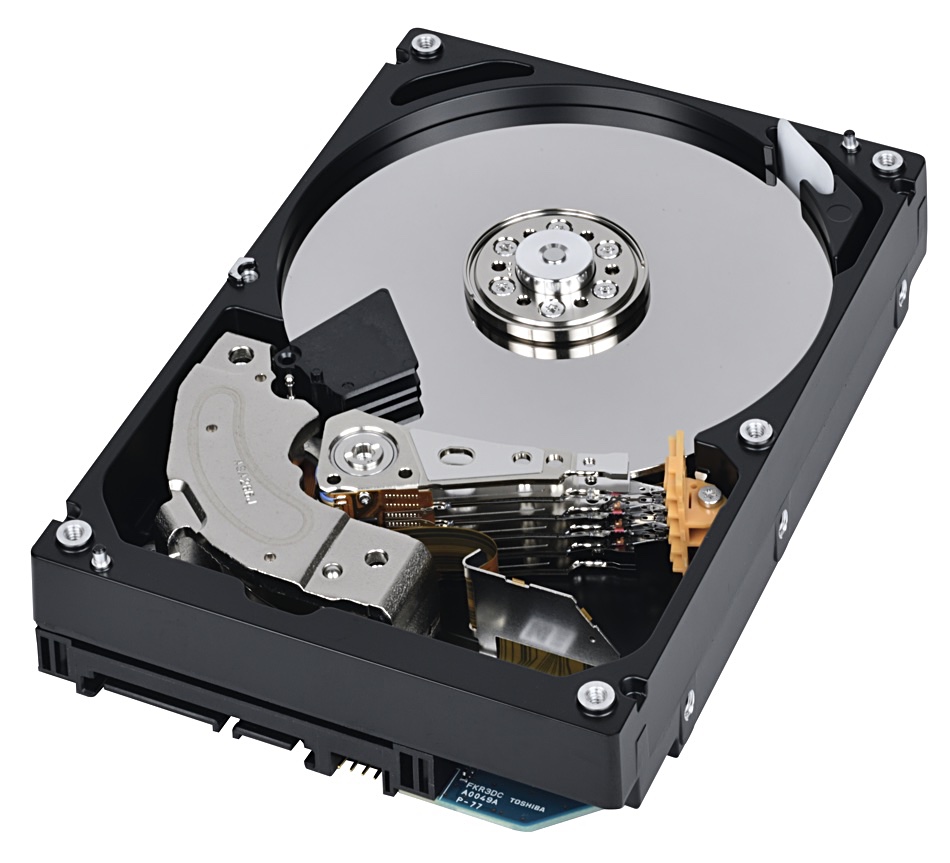HDD – Hard Disk Drive. This contains spinning circular magnetic recording surfaces in which data is laid out in concentric tracks and accessed by a read-write head, mechanically propelled across and just above the platter’s surface to access a track and then read or write its data as the platter spins underneath the head. The read-write head is prevented from hitting the platter surface by air or helium gas suspension. In effect, it flies above the disk drive platter surface. There can be up to 10 platters in a disk drive.


Disk drives come in 3.5-inch and 2.5-inch form factors. The most common format is 3.5-inch and such drives are used for high-capacity nearline storage and spin at 7,200rpm. Others, such as desktop PC drives, spin at 5,400rpm. The smaller 2.5-inch drives were used for notebook computers, where they are giving way to SSDs, and for faster responding enterprise drives spinning at 10,000 rpm. These so-called mission-critical drives are also being replaced by SSDs which read and write data much faster than disk drives, whatever the disk drive’s spin speed.


